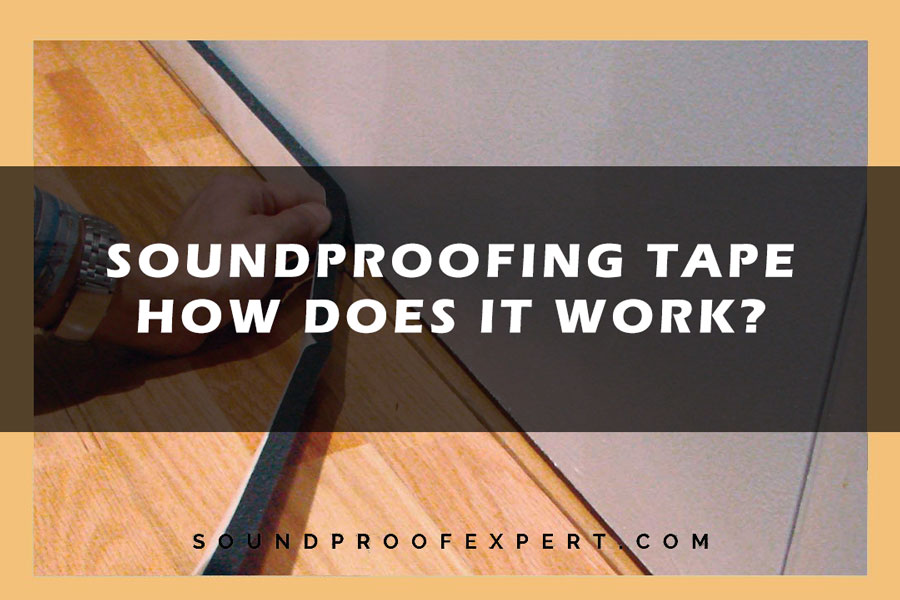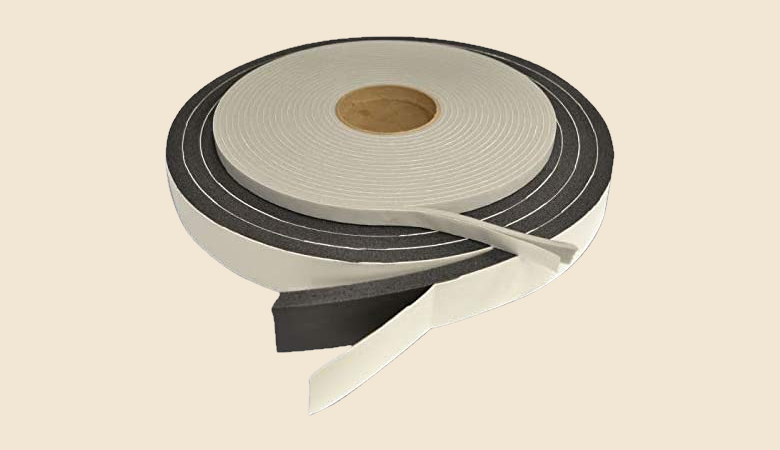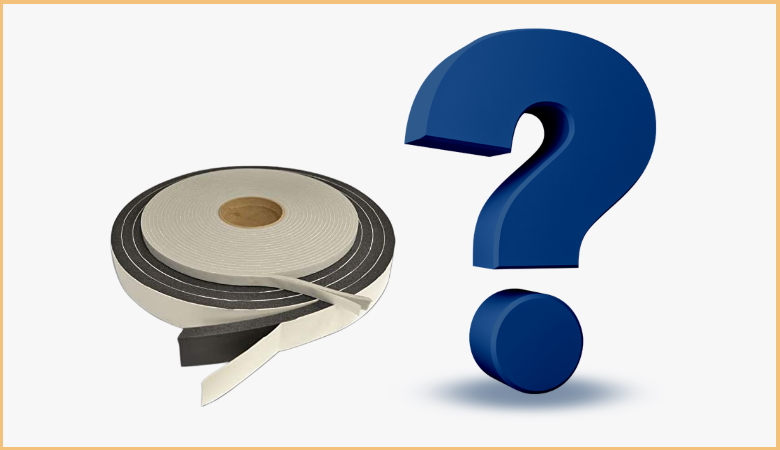
When you’re on a mission to reduce sound, you’ll throw just about any solution at the problem and hope that it sticks.
A popular method for sealing up problem areas when it comes to noise levels is to use soundproofing tape, but whether or not it’s effective is another question.
So, how does soundproofing tape work?
This adhesive is applied to existing structures in an effort to reduce vibrations and also prevent sound from escaping out of small cracks and spaces.
It’s applied just like regular tape to areas like drywall and ceilings and usually as part of a larger-scale project to soundproof an area.
This wonder tape could be the final missing piece in your soundproofing project, provided you know where and how to use it. With our help, you’ll have all of the knowledge and know-how you need, as well as the good and the bad of this tape to see if it’s the best fit for you.
What is Soundproofing Tape?
Soundproofing tape is an adhesive that can be applied to the cracks and seams of your existing barriers to block any further sound from coming through, and may also reduce vibrations of certain materials.
The most common applications are on materials like soundproof drywall, acoustic tiles, foam padding, windows, doors, and more.
There are a few different types of tape and each with benefits for different purposes, so you should determine which is the best fit before commencing:
- Acoustic foam tape: A thicker type of soundproofing tape but one that can be applied in all settings like music rooms, theaters, and home improvement areas as needed. This tape is made of materials like polyethylene or EPDM and can provide an airtight seal that prevents sound from traveling.
- Soundproofing tape: This is a thinner type of adhesive tape that works best with sealing the cracks and seams between soundproofing materials like drywall and foam.
- Membrane soundproofing tape: This unique tape is made just for metal structures and can be applied to them directly. The purpose of this synthetic membrane adhesive tape is to prevent the vibrations that come off of metal structures and reduce the overall noise factor of a building or room.
- Weatherstripping foam tape: Although made to be a weather or bug strip that keeps outdoor elements from getting in, this is a cheaper alternative that you can apply to doors and windows to get some relief from sound traveling.
How Does The Adhesive Work?

These adhesives are applied to surfaces to create a barrier between the smaller spaces where sound might be able to travel. Usually, you’ll find them in small gaps, creases, and seams or areas that might not appear to make an impact on sound absorption, but actually do.
The tape is made out of materials like foam and rubber, which have their soundproofing abilities even when used independently.
If you apply them with an adhesive backing, you’re creating a quick and easy solution to sound escaping, and it helps to keep the area insulated so that noise can’t travel.
Soundproofing tape made with synthetic membranes work by damping vibrations on structures, which also contributes to a lot of noise.
The most common material to experience these vibrations is metal, which can be found in the interior of walls, supportive beams, and other structural parts of a building, so it’s highly effective in this setting.
Applying Soundproofing Tape the Right Way
The application of soundproofing tape is straightforward and requires no special tools or know-how. All you have to do is determine where in the room needs to be sealed and then trim it down to size and cover it.
These tapes usually come in rolls and have either one or two adhesive sides, which will be covered with a protective backing. Only peel off the backing when you’re ready to apply it and works fast once you do, otherwise, it can dry out and become useless.
To get the best results, it may help to clean the area first with a specialized product for removing dirt and oil, but nothing too harsh.
Allow it to dry before applying the tape, and give the tape at least 24 hours to set and for the adhesive to harden before attempting to apply a finish or paint to it.
Pros and Cons

Using soundproofing tape won’t always be the best approach, so you need to assess each space as you come to it.
To help you determine whether this adhesive will work for you, we’ve covered some of the best and worst features that it has to offer.
Pros
- The application of the tape is easy enough for anyone to do and although it looks simple, it can have a huge impact on reducing noise and softening vibrations.
- You can apply the tape to just about any surface, and it doesn’t require you to install any new drywall or do any major renovations to notice results.
- The tape is less messy than other options like sealants and glues, and there’s no clean-up involved when the job is done.
Cons
- Using too much of the tape can be expensive, so unless you have the needs, you can use a cheaper alternative like weather stripping tape. For larger gaps, it may be better to apply a soundproofing sealant instead.
- You’ll need to replace the tape every so often if the adhesive starts to dry out. For a quality product, this may be every couple of years, and for cheaper ones, once a year.
Soundproofing Tape for Success
Soundproofing tape isn’t a one-stop-shop for the noise canceling and damping, but it can certainly help.
Knowing where and how to apply this adhesive will get the best results, and it’s a simple process that can make a huge difference in the soundproofing process.
Related Questions

The application of soundproofing tape has the potential to make a lot of difference when used in conjunction with other methods.
If you want to learn more about what you can do to reduce noise levels and help with sound absorption, check out these FAQs and our expert answers for more inspiration.
How Can I Make My Windows Soundproof?
To block noise from coming in or going out of your window, you can try a few different methods. Applying soundproofing adhesive to the cracks, covering the windows with heavy curtains, and sealing up any spaces that are exposed will help in reducing the noise traffic in either direction.
Does Soundproof Paint Work?
Soundproof paint does not make a major difference in sound levels, according to reviews of these products, and shouldn’t be the only method used for soundproofing.
However, when used in conjunction with other methods like soundproof specific drywall, tape, and carpets, you may achieve a slightly better level of sound absorption than not using it.
Can You Soundproof Existing Walls?
If you don’t want to start from scratch and install insulation or soundproof drywall in a room, there are things you can do to your existing walls to help.
Adding acoustic wall tiles, hanging rugs or heavy blankets, and using blow-in insulation may all be possible if you’re hoping to soundproof a room without knocking down structures that are already there.
Resources

Hi Jim,
I’m planning to put a ceiling in the basement and will use rock wool in addition to 5/8 drywall. In an effort to keep things simple and inexpensive, it seems like there would be some form of soundproofing tape I could put on the bottom of the floor joists to create a mechanical break between them and the drywall, rather than the metal rail installation or multiple layers of drywall. Do you know why a simple approach like this doesn’t appear to be suggested by anyone?
Thanks!